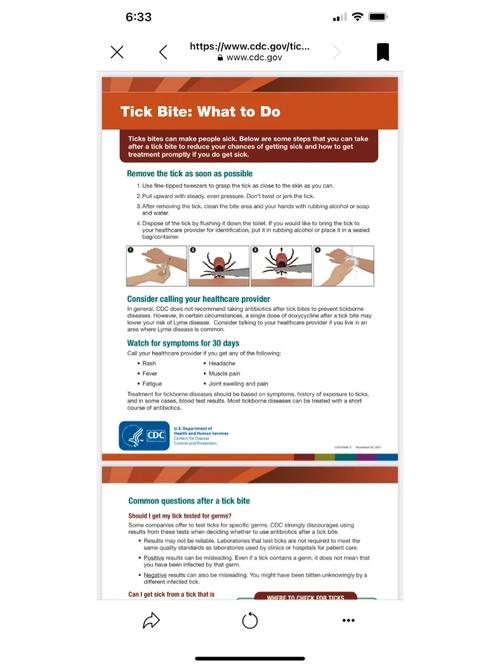
Understanding Tick Bite Illness: A Comprehensive Guide
Tick bites can be a cause for concern, especially when it comes to the potential for transmitting diseases. In this article, we delve into the details of tick bite illness, exploring its causes, symptoms, prevention, and treatment. By the end, you’ll have a clearer understanding of this often overlooked health issue.
What is a Tick Bite?
A tick bite occurs when a tick, a small arachnid, attaches itself to your skin and feeds on your blood. Ticks are commonly found in wooded and grassy areas, and they can carry various diseases that can be transmitted to humans.

Common Tick-Borne Diseases
Several diseases can be transmitted through tick bites. Here are some of the most common ones:
| Disease | Caused by | Common Symptoms |
|---|---|---|
| Lyme Disease | Borrelia burgdorferi | Fevers, chills, fatigue, headache, muscle and joint aches, swollen lymph nodes, and a characteristic rash known as erythema migrans. |
| Ehrlichiosis | Bacteria of the genus Ehrlichia | High fever, severe headache, muscle aches, nausea, vomiting, and fatigue. |
| Anaplasmosis | Bacteria of the genus Anaplasma | High fever, severe headache, muscle aches, chills, and fatigue. |
| Rocky Mountain Spotted Fever | Bacteria of the genus Rickettsia rickettsii | High fever, severe headache, muscle aches, and a rash that may appear on the palms of the hands and soles of the feet. |
Identifying a Tick Bite
Identifying a tick bite can be challenging, as it may not always be immediately apparent. However, there are some signs to look out for:
- A small, red bump at the site of the bite
- A small, black or brown spot at the site of the bite
- A small, red, or purple rash that may appear around the bite
Preventing Tick Bites
Preventing tick bites is crucial, especially if you spend time in tick-infested areas. Here are some tips to help you stay safe:
- Wear long-sleeved shirts and pants when in tick-infested areas
- Use insect repellents containing DEET, picaridin, or oil of lemon eucalyptus
- Perform regular tick checks on yourself, your family, and your pets
- Remove ticks promptly and carefully
Removing a Tick
Removing a tick as soon as possible is essential to reduce the risk of disease transmission. Here’s how to do it:

- Grasp the tick’s head with a pair of fine-tipped tweezers as close to the skin as possible
- Pull the tick straight up and away from the skin in one, smooth motion
- Do not twist or pull the tick off the skin, as this may cause the mouthparts to break off and remain in the skin
- After removing the tick, clean the bite area and your hands with soap and water
Seeking Medical Attention
If you develop symptoms of a tick-borne illness after a tick bite, it’s essential to seek medical attention promptly. Early diagnosis and treatment can significantly improve your chances of recovery.
Conclusion
Tick bite illness is a serious health concern, but with proper prevention and prompt treatment, you can reduce your risk of infection. By understanding the causes, symptoms, and prevention methods, you can take the necessary steps to protect yourself and your loved ones.






